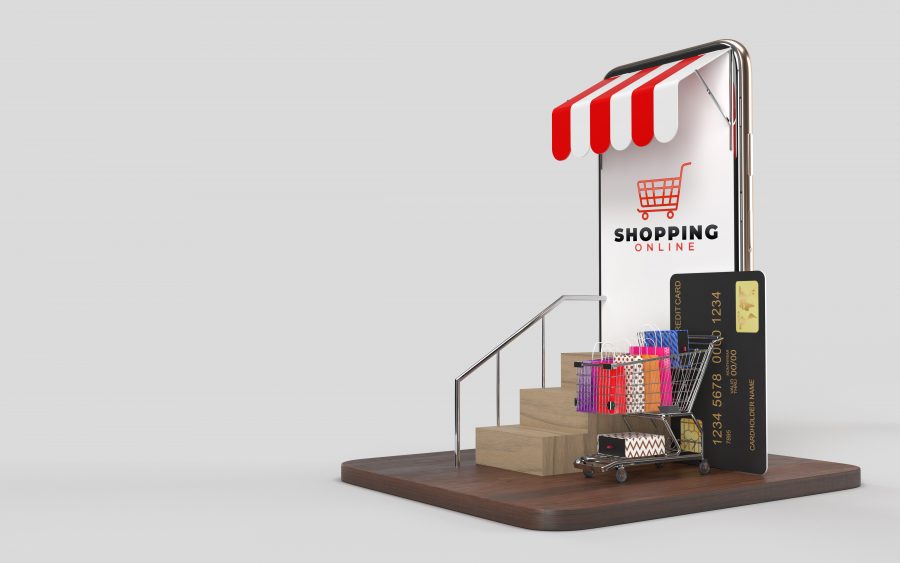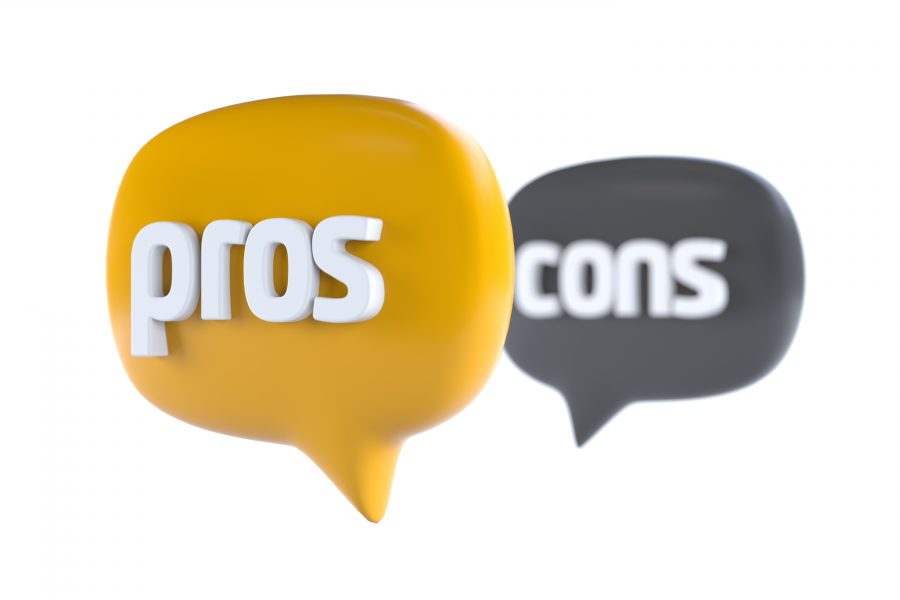Most people know that eCommerce is not only the trend but also the undeniable future. In the context of the “new normal” situation after the pandemic Covid-19, the trend is supported by the change in the customers’ behavior and many new technologies which facilitate sellers to approach online customers.
In the past, setting up an eCommerce store may be the story only written by the sellers with much IT-based knowledge in hand. However, the situation now changes much because of the aid of the POD service provider and Print on Demand companies.

You, active sellers, in terms of individuals or small teams with little IT-based experience, are also able to set up your own eCommerce store with your own brand as you set up a traditional business. That sounds great hah!
So we hope, via this article, to provide you with the general knowledge of eCommerce stores and recommend strategies for a successful POD eCommerce store.
The strategies are separated from the paid methods which will be mentioned in the next article “The overview of most popularly used paid-traffic channels for Print on Demand business”. Keep in mind that everything by your brain should be used before paying any bucks to other brains.
INTRODUCTION
I. Ecommerce store or Online Marketplace, which one should you choose?
1.1. E-commerce store pros and cons
PROS and CONS
1.2. Online Marketplace Pros and Cons
PROS and CONS
1.3. Multi-channel selling
II. Criteria for choosing the best Print-on-demand companies
2.1. High-quality product
2.2. Fast Delivery time
2.3. Product base cost and shipping rates
2.4. Printing and Customization Option
2.5. Compatibility with Other Platforms
III. Recommended strategies for successful POD eCommerce store
3.1. Drive traffic without buying ads (DTWA)
3.2. Conversion rate optimization (CRO)
CONCLUSION

I. Ecommerce store or Online Marketplace, which one should you choose? Have you ever considered the reason you choose to do business with either Online Marketplace or your own eCommerce store? The following pros and cons analysis will help you to make decisions in few seconds.

1.1. E-commerce store pros and cons
Table of Contents
PROS
Your store will be constructed as a standalone website if you use an eCommerce platform. There are a number of advantages:
Having your own website allows you to customize your store to your preference. The design of your store is virtually totally up to you and your preferences, and you can pick and choose which features to include.
This is why eCommerce platforms are perfect for sellers that want to expand their business. If you want to construct a separate website, you can have a strong brand presence. You have complete control over how your customers perceive you, from store design to transactional emails.
An eCommerce platform is a gold mine if you want to collect customers’ information. While it is difficult for you to collect all the customer information on the Online Marketplace, you can utilize Google Analytics to figure out exactly who your consumers are and what is their behaviour at your “eCommerce house”. You may also use Facebook Pixels to create retargeting campaigns for your Facebook advertisements, as well as email sign-up boxes, pop-ups, and other features.
CONS
Traffic: One of the most significant disadvantages of a standalone website is that traffic is derived only from your marketing efforts and search engines. This means that you are responsible for the traffic and visitors to your website.
You don’t have to worry about traffic if you sell on the online marketplace. So if you’ve got little knowledge of driving free or paid traffic, your revenue may suffer.
Competition: Low traffic might indicate a high level of competitiveness. When you compete in search engines as a separate website, you have to compete with the entire internet for the attention of your potential customers, not simply a small marketplace with a limited amount of products.
Payment process: while most platforms offer apps or add-ons for this, it is something you need to set up yourself, and that may come with some extra costs.
These disadvantages mean that starting up and getting your customer base is more of a challenge than it is with a marketplace.
1.2. Online Marketplace Pros and Cons
PROS
Your store is an account on the marketplace’s website. The major benefit of this setup, and one of the reasons why many people prefer marketplaces to eCommerce systems, is that each marketplace has its own search engine, which provides an extra source of traffic.
The marketplaces also have their own preferences that you may follow and depend on. Take advantage of the fact that you have a niche product, a message, or a brand that fits well with a certain marketplace and use it to your advantage.
You don’t also have to worry about a lot of the technical things with marketplaces. The marketplace handles purchase information, including payment processing—for a fee, of course—once your store is set up and items are uploaded.
CONS
Each marketplace has its own regulations that you must follow. This may imply that you won’t be able to brand your business the way you want or that you won’t be able to offer the items you want.
The cost: you will have to pay a certain fee for any marketplace you sell. The fee comes into monthly membership or percentage of sales order. This leads to the fact that you can’t control the expected margin.
Less control over your brand and customers: the marketplace determines the personalization possibilities, and communication regarding sales is normally handled by the marketplace.
1.3. Multi-channel selling
Although we’ve discussed the advantages and disadvantages of both eCommerce platforms and marketplaces, no option should be the only. It depends on your business goals and resources. Multichannel selling may be a solution to this problem.

The approach of offering your products on many platforms in order to attract a broader audience is known as multichannel selling. The more internet space you carve out for your stuff, the more sales opportunities you’ll have. Plus, the sooner you start, the more money you’ll have in the future.
So what are the advantages of multiple-channel selling:
First, expand the database of your customers. You can offer the highest quality products that have a beautifully designed website. However, no one happens to discover your store, it will be difficult to sell more. Therefore, you can significantly increase your brand name and product reach by selling your product on your website and also listing multiple marketplaces. You can also send regulars to your website for better control of customers’ databases.
Second, if something goes wrong, it means that you have a backup plan. The worst scenario is something no one wants to think of, but there are a few things you can’t control. If something happens to your website or your marketplace account, it’s great to have an alternate channel for writing out your loyal customers!
Third, you can provide a convenient shopping experience for your customers. People are creatures of habit. If you’re used to shopping on Amazon, ordering from the website might seem like a daunting task. By being in the place your customers are, you make their shopping experience easier and more comfortable.
Fourth, it can help you better understand your audience. Selling through multiple sales channels allows you to collect more information about your customers and their shopping habits. You can use this knowledge later when creating marketing and sales campaigns, or when deciding on your next target sales channel.
Finally, you can increase your sales on the days when you spend the most. This peak goes down all year round. Cyber Monda, Black Friday, Valentine Day, Back to School, etc. Increasing sales is from adding channels.
Of course, as channels increase, the procedure increases. It requires more work and attention, including setting up on multiple platforms, handling inventory, tracking, and managing taxes. However, this business model has more bonuses than its drawbacks. Therefore, we recommend you try this method of selling for the best results.
Expanding your sales channels is undoubtedly difficult, but it is worth the effort. As a result, choose your sales channels carefully and ensure that you can handle the increased sales.
II. Criteria for choosing the best Print-on-demand companies
Although these are the well-known print-on-demand companies in the world, you should clearly know the criteria to choose the best suitable one for your business. Choosing suitable print-on-demand companies means that you have your customer loyalty and an optimized cost scheme.
Therefore, pay attention to the following criteria:

2.1. High-quality products
It doesn’t matter that how stunning one design is if its printing quality is not good. As a result, it’s a good idea to make a shortlist of your preferred print-on-demand vendors and then purchase a few test samples from them. Therefore you can get a personal look at the items’ quality. BurgerPrints may be the
It’s also vital to verify whether the ink rubs off readily when it comes to printed items.
Also, don’t only look at the items you want to start selling right away; try to acquire a sense of the quality of the range of products. You never know when you might want to extend your product range.
2.2. Fast Delivery time
If delivery takes a long time or items are late, it will be difficult to build a positive brand reputation and generate repeat orders from satisfied consumers.
As a result, while selecting a print-on-demand provider, it’s critical to examine the usual shipment time. Customers should get their items within a week after making an order, if possible.
2.3. Product base cost and shipping rates
Quality and speed are important components of a successful firm, but expenses are arguably even more important.
Choosing a print-on-demand firm with high product and express delivery might result in lower margins, which means less profit per sale. This can have a negative impact on your business growth because you won’t have money to reinvest in things like Facebook advertising.
Still, rather than comparing print-on-demand service prices, it’s better to focus on how much money you’ll make each sale. Paying a greater price for a higher-quality good, for example, may allow you to sell it for a bigger profit.
2.4. Printing and Customization Options
Customization possibilities are common among print-on-demand providers. You may want a lot of customization and printing possibilities, or only a few, depending on your requirements.
Do you intend to sell items with simple logos? Or do you want to use a variety of designs to exhibit your artistic abilities? It’s also worth looking at the unique packaging choices provided by each print-on-demand provider.
Make sure the print-on-demand site you choose meets your design and branding requirements.
2.5. Compatibility with Other Platforms
Print-on-demand services allow you to sell through a variety of channels. Ideally, any print-on-demand firm you pick will enable you to sell through a variety of channels, including:
Your online eCommerce store.
Online Marketplace such as Etsy/eBay/Amazon.
Also, ensure that you have enough area to expand. You could, for example, only wish to sell on Etsy right now. However, it’s a good idea to double-check that there aren’t any other alternatives. You won’t have to change print-on-demand companies in the future if you want to change the marketplace.
III. Recommended strategies for successful POD eCommerce store
One more thing you should know is that you have many things to do after setting up an eCommerce store. Hereunder we recommend the two strategies for a successful POD eCommerce store. You should utilize it before you start to spend any bucks on advertising campaigns.

3.1. Drive traffic without buying ads (DTWA)
3.1.1. Write it right to your customers
To create an impression on customers, you must provide more than simply a product catalog to meet their demands. You must persuade them to pick your brand. All of the advantages that come with your product play a big role.
And you must successfully convey these advantages by writing about them and producing content on your online domains. Write what is best for your clients, and you will see positive results in both your business and customer loyalty.
3.1.2. SEO Optimization
Search engine optimization and social media marketing have now become an integral part of the success of online retailers. Your goal with SEO is to rank 05 on any relevant keyword query. Your goal of using social media marketing is to get your brand message across to as many interested consumers as possible.
Remember that you create an optimized structure for your eStore and publish amazing content. Remember, Google search bots will crawl everything you post on the web. This is how Google knows if your website is the best answer to a user’s question. So if you want to make sure Google ranks your best content high, both the content itself and some technical elements are important.
3.1.3. Social proof
One of the most surprising facts about e-commerce is that almost 70% of users trust product/service recommendations from strangers. In other words, people will look for reviews before deciding anything.
This is obviously why your online retail business needs reviews and social proof to support your marketing efforts. Look at eCommerce giants such as Amazon and eBay: they use social proofs on every product page in the form of product reviews. They also use star ratings, video reviews, and other types of recommendations to attract visitors to buy.
Most online retailers also rely on Facebook, Twitter, and Instagram to create a large number of followers to post enthusiastic comments. Keep in mind that 23% of buyers are influenced by social media recommendations/comments. In addition, online shoppers want products to come to life through pictures (78%) and reviews (69%).
3.1.4. Email Marketing
No matter how you view its power, email marketing is actually one of the most effective marketing channels. Email marketing is an important part of any business. But this is even more important for your e-commerce store. Because this is one of the best ways to reach target consumers.
As an eCommerce company, unlike a physical store, you cannot meet customers face-to-face. Using email, you can send messages directly to your inbox. In addition, you can use emails to send product videos to increase engagement. And, of course, it is possible to implement advanced marketing automation (such as abandoned shopping cart emails or re-engagement sequences).
3.1.5. Referral marketing
There is no better advertising than word of mouth. First of all, it is free. Secondly, it is real. No matter how advanced our technology is, how much advertising information affects us, word of mouth continues to affect us. Especially when we shop online, we often buy things that our friends also buy and like. How Do Ecommerce Companies Use Referral Marketing? You can create a referral program so that your buyers can refer their friends easily and beneficially.
3.1.6. Identify customer personas
You need to know who your ideal buyer is. Most smart customers today make smart decisions to purchase products. Therefore, before doing any marketing work, you must thoroughly understand your customers.
What are the benefits of creating a customer profile? Be able to create targeted messages, get a higher return on investment from optimized marketing efforts, and increase sales for your e-commerce store at the end of the day!
3.1.7. Build loyalty customers
As an online business owner, you need to get people to visit again. Not only is it easier to sell products to people who are already connected to you, but it is also a good way to use social recognition and build trust in the market.
After all, customer loyalty comes first when it comes to factors that drive e-commerce website traffic. But how do you get old customers back? An easy way is to re-engage them through automated email marketing. In addition, if you use Facebook ads or Google Adwords, retargeting (or remarketing) is a great way. Is your email list like a ghost town? Access verified plug-and-play email autoresponder templates to re-engage inactive subscribers and customers, and automate your sales process.
3.1.8. Data is the King
Website and customer data can help you develop strategies that can drive more traffic, move this traffic further down the sales funnel, and ultimately allow you to target conversion. Therefore, you need to provide your marketing team the proper data analysis so they can expand effective methods and increase sales.
Can You Increase Traffic To An Ecommerce Store Without Buying Ads?
Getting more people to visit your eCommerce website doesn’t mean you need a whole team of marketers or a large marketing budget. You can definitely use free strategies and tools to start attracting and converting target consumers.
In this eBook, we discuss 08 ways to help your online store get more traffic as quickly as possible. Choosing the method that works best for you and developing an action plan will help.
3.2. Conversion rate optimization (CRO)
After you drive traffic to your website, you need to optimize your conversion rate for more and more sales. The efforts should be invested until you start to earn stable sales via your eCommerce store.

From 2018 to 2019, the global average eCommerce conversion rate was 2.9% (Statista). This means that less than 3 out of 100 visitors to the online store make a purchase. This can be a very daunting statistic for people who want to open an online store as a side business or even as a full-time job.
However, the average conversion rate does not limit your potential success. You can increase your online store sales and other goals through conversion rate optimization (also known as CRO).
What is the conversion rate and how to deal with the conversion rate?
Conversion can be almost any goal you set for your store, the most popular ones are:
purchase record
email subscription
click the link to submit a form/survey, etc.
It shows whether the marketing, design, content and any other efforts you invested in your online store are working to improve your store’s performance.
Therefore, whenever you plan, test, and implement changes and activities on your website, your conversion rate should be your preferred metric.
Here’s how to calculate your conversion rate:
You can replace the number of visitors with the number of leads, page sessions, and other metrics, depending on how you plan to measure traffic.
Although purchase conversions are the most important for online store owners, other conversions can still affect the success of your e-commerce, so you cannot ignore them. For example, email subscriptions can lead to more visits to your store, increasing sales opportunities.
3.2.1. Enhance your website functionality
Online purchasing is popular since it is a quick and easy procedure. As a result, your store should be quick and simple to use. Here’s what you’ll need to do to enhance:
Your store’s loading speed (use Google’s PageSpeed Insights to get a complete picture of your page’s loading speed and any problems that could be influencing it)
Accessibility on mobile devices (visit your store’s website on any mobile device to check how easy it is to navigate)
Internal link building (check your store’s links using Google Search Console to see if any are broken).
Please keep in mind that the above factors should be considered whenever you plan to make an effect on CRO.
3.2.2. Effective site navigation and convenient checkout process
Your store should be simple to navigate in order to improve its functionality. Implement the following elements to improve and speed up your shopping experience:
Searching bar for products
Filters bar
Product categories and subcategories
CTA buttons (“Add to cart,” “Learn more,” “Compare,” etc.)
Many consumers become easily sidetracked throughout the checkout process, and they frequently alter their minds at the last minute. For the business owner, this makes checkout one of the most challenging pain points of the buying experience. Make your checkout as convenient as possible so that your consumer does not depart empty-handed.
3.2.3. Increase consumer trust and provide social proof
When it comes to turning new visitors into clients, this is extremely essential. To acquire their trust, you must do the following:
Provide contact information, or even better, a chat widget.
Focus on the About Us page
Display the various payment methods.
Include all shipping and return information.
Include links to your social media profiles.
For a more polished appearance, use professional-looking pictures.
Product reviews are one of the most effective strategies to earn buyers’ trust.
However, when you’re just getting started and don’t have any reviews, to begin with, it may be difficult. Here are some tips to help you get over the initial step:
Give away free items/products for initial feedback.
Customers that write evaluations should be rewarded with discounts for future purchases.
After a consumer makes a purchase, send them customized alerts or survey emails.
3.2.4. Offer distinct value propositions
Working in eCommerce means you’ll be up against some stiff competition. To gain a position in the game, you must demonstrate to your consumer why your store is the greatest option for them. The following are some of the USPs that make a store more appealing:
Shipping is available worldwide.
Returns are always free.
Shipping is free.
Environment-friendly fulfillment and delivery options
Obviously, your actions must now correspond to your words. You must always keep commitments to your consumers.
3.2.5. Personalize your offerings
With excellent special offers, you may make your consumer feel valued and generate that “OMG, this is exactly what I need” feeling:
Birthday discounts
Hidden sales
Customization recommendations
Upselling in the cart at the last minute
Offers are only valid for a limited time.
Free product samples are available upon request.
Program for rewarding customers
If you can treat your visitors as your loyal customers and try to make them feel special whenever they visit your online store. We believe you will get more customers in the long term.
CONCLUSIONS
To sum things up, the eCommerce store plays an important role in the Print-on-demand business because it is one of two main sales channels.
Whether you build up a store at the online marketplace or your own eCommerce store, you should choose carefully the print-on-demand company.
BurgerPrints may be your first choice whenever you want to search for a Print-on-Demand company with the focus on Product Quality and Shipping time. With our factorie in Mexico, All-Over-Print shirts must be shipped to your customers in a blink without any dispute. Please see more at the link:
Any choice you make, please remember to try to drive the organic traffic and optimize the conversion rate before you rely on paid traffic.

